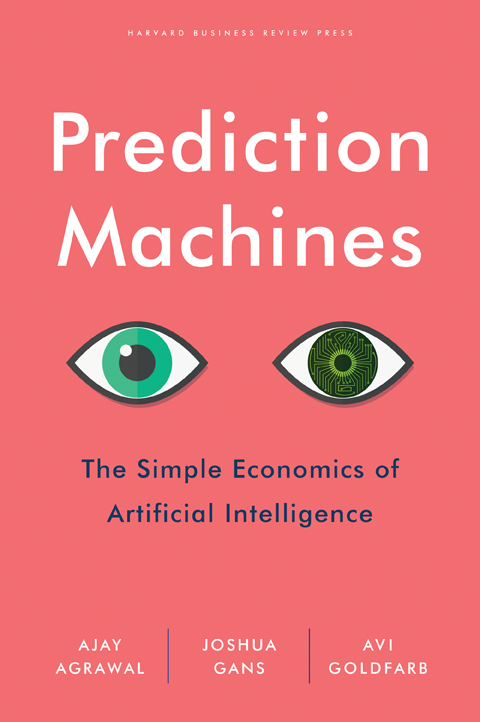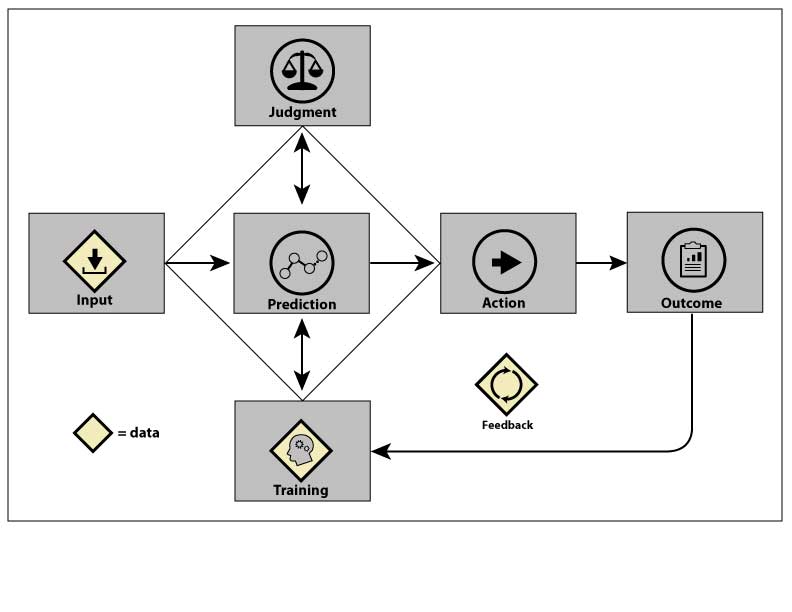Prediction Machines
By Robert Boespflug, robert@apn.ai
July 29th, 2018 - 8 min read
I recently finished reading Prediction Machines: The Simple Economics of Artificial Intelligence, a book about what artificial intelligence (AI) really means from the perspective of economists. It was written by 3 economists from the University of Toronto: Ajay Agrawal, Joshua Gans and Avi Goldfarb. I believe the book to be stunning in regards to its clarity on what AI really is and what it means. Here are some of the most important takeaways from the book.

Why is it important to look at AI through the lens of economics?
Economists are good at ignoring the hype and noise surrounding a new technology. They don’t care if we call an economy the “New Economy” because of inventions like the desktop computer, the internet, or AI. The tools in an economist’s toolbox remain the same, things like Supply and Demand Curves and Price Elasticity for instance. Economists look at a new technology and merely try to figure out what it drops the cost of. And its impact on other costs. It was of course very transformational and exciting when desktop computers hit the market in the 1980’s. The could do all sorts of cool things with killer apps like spreadsheets (e.g. Visicalc, Lotus 123, Excel). They grew stronger every 2 years too via Moore’s Law. To an economist however, desktop computers merely did one thing. It dropped the cost of arithmetic. In fact, arithmetic got so cheap that we took problems that weren’t math problems and converted them to math problems. Photography for instance used to be a chemistry problem before we figured out how to convert one’s and zero’s into pictures with math. The internet simply dropped the marginal cost of search, communication, and the transmission of digital products and services down to zero.
Today the new big thing is AI. If you went to the Consumer Electronics Show in Las Vegas this year you were probably amazed. Drones, robots, virtual reality, 3D printing, sensors galore….astonishing in sophistication and scale. To an economist however, she is really thinking only about the part of AI that matters. Machine Learning and it’s powerful subset called Deep Learning. To an economist, that is what AI really is and it is in a class all by itself. The reason is Deep Learning is a General Purpose Technology (GPT). Semiconductors for instance are also a GPT. They are called that because they are a foundational input that impacts so many different things.
Most people are now aware that a computer beat a champion human GO player a couple of years ago. It was in March, 2016 when Google’s Deep Mind pitted its Deep Learning machine AlphaGo against one of the very best Go players in the world Lee Sedol. AlphaGo won 4-1. It was a “Sputnik” moment for China and caused them to make major investments in this new “alien technology”. AlphaGo since then has gotten orders of magnitude stronger. Here is a useful definition of Deep Learning:
Deep Learning is an artificial intelligence function that imitates the workings of the human brain in processing data and creating patterns for use in decision making. Deep learning is a subset of machine learning in Artificial Intelligence (AI) that has networks capable of learning unsupervised from data that is unstructured or unlabeled.
Examples of areas where we use AI today for prediction include:
Customer Churn
Demand Forecasting
Image Classification
Translation
Supply Chain Management
Drug Discovery
Insurance
Autonomous Cars
Note that translation used to be a rules-based problem and we converted it into a prediction problem. We did the same with self driving cars back in 2012. People forget that in 2012, computer engineers predicted that we would not have self driving cars in our lifetimes. The programming was just too complex...to many “if/then” statements to deal with. Then we reframed the problem into a prediction problem and simply asked the self driving car to do one thing: predict what a human driver would do. At first self driving cars didn’t know what to do. Then they became awesome...very fast...better than humans.
Much discussion about AI emphasizes the variety of prediction techniques using increasingly obscure names and labels: classification, clustering, regression, decision trees, Bayesian estimation, neural networks, topological data analysis, deep learning, reinforcement learning, deep reinforcement learning, capsule networks, and so on. The techniques are important for technologists interested in implementing AI for a particular prediction problem. The authors emphasize that each of these methods is about prediction: using information you have to generate information you don’t have. The book identifies situations in which prediction will be valuable, and then on how to benefit as much as possible from that prediction. Cheaper prediction will mean more predictions. This is simple economics: when the cost of something falls, we do more of it.
Many problems have transformed from algorithmic problems (“what are the features of a cat?”) to prediction problems (“does this image with a missing label have the same features as the cats I have seen before?”). Machine learning uses probabilistic models to solve problems. So why do many technologists refer to machine learning as “artificial intelligence”? Because the output of machine learning—prediction—is a key component of intelligence, the prediction accuracy improves by learning, and the high prediction accuracy often enables machines to perform tasks that, until now, were associated with human intelligence, such as object identification. Prediction Machines are scalable and will continue to get much better, faster, and cheaper.
Cheap Prediction increases the value of human judgment and creates better jobs.
The press has it largely right when they talk about data being the new oil. But the authors believe they have it quite wrong when discussing doomsday scenarios, future dystopian societies and robots taking human jobs away. To explain why the press has it wrong it is instructive to understand a concept in Economics called Cross Price Elasticity. For example, when the price of coffee falls, the value of the “Compliments” of coffee (cream and sugar) rises. So of course we see this because when the price of coffee falls we consume more of it. But we still need to put that cream and sugar in it. As it relates to coffee, tea is a “Substitute”. As coffee prices fall relative to tea, some tea drinkers switch from tea to coffee which causes the value of tea to drop. Thus, the value of “Compliments” to something rise and the value of “Substitutes” falls.
To explain how this concept works in terms of Prediction Machines and human judgment let’s turn to a very powerful graph provided by the authors...Anatomy of a Task.

